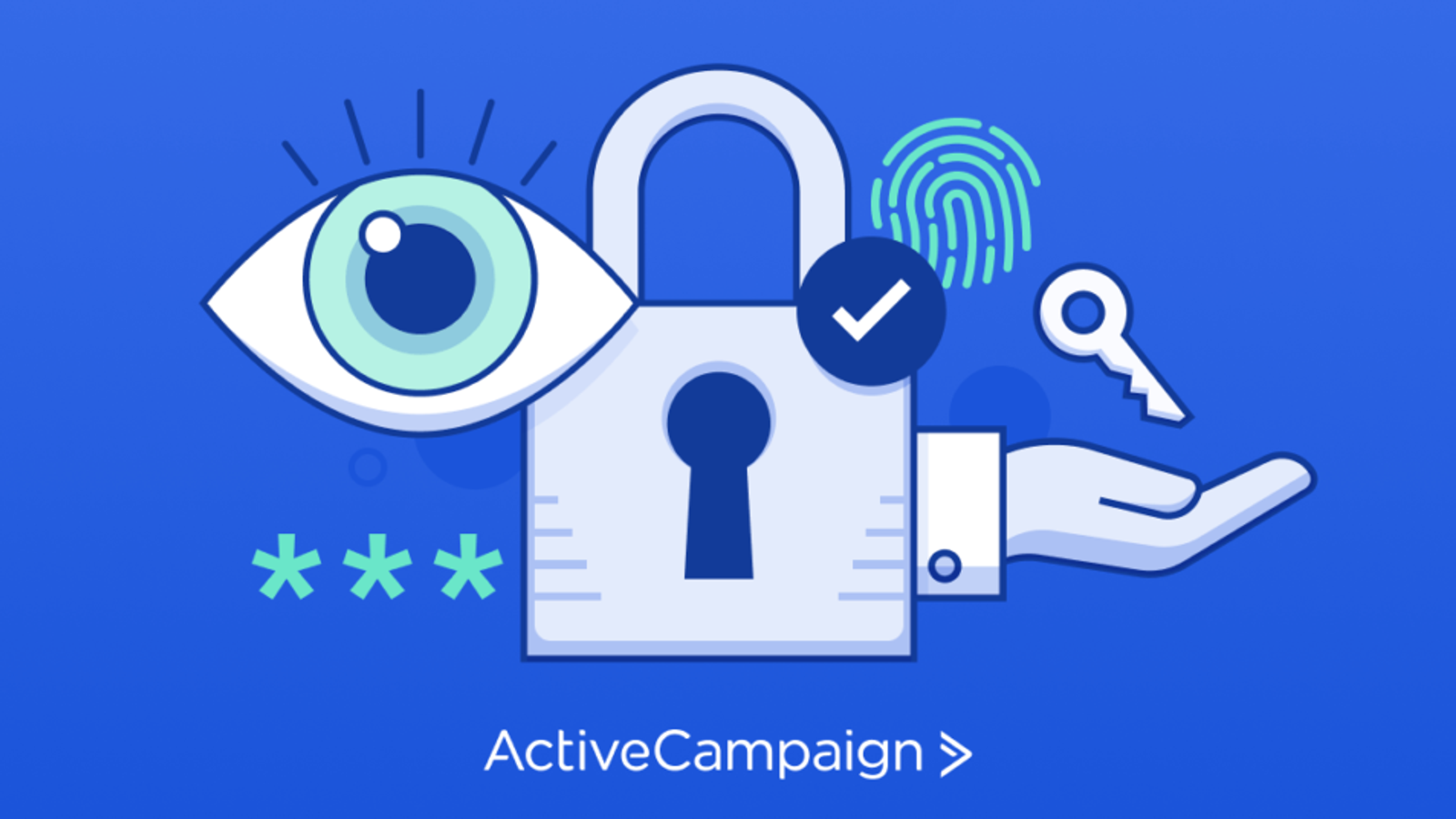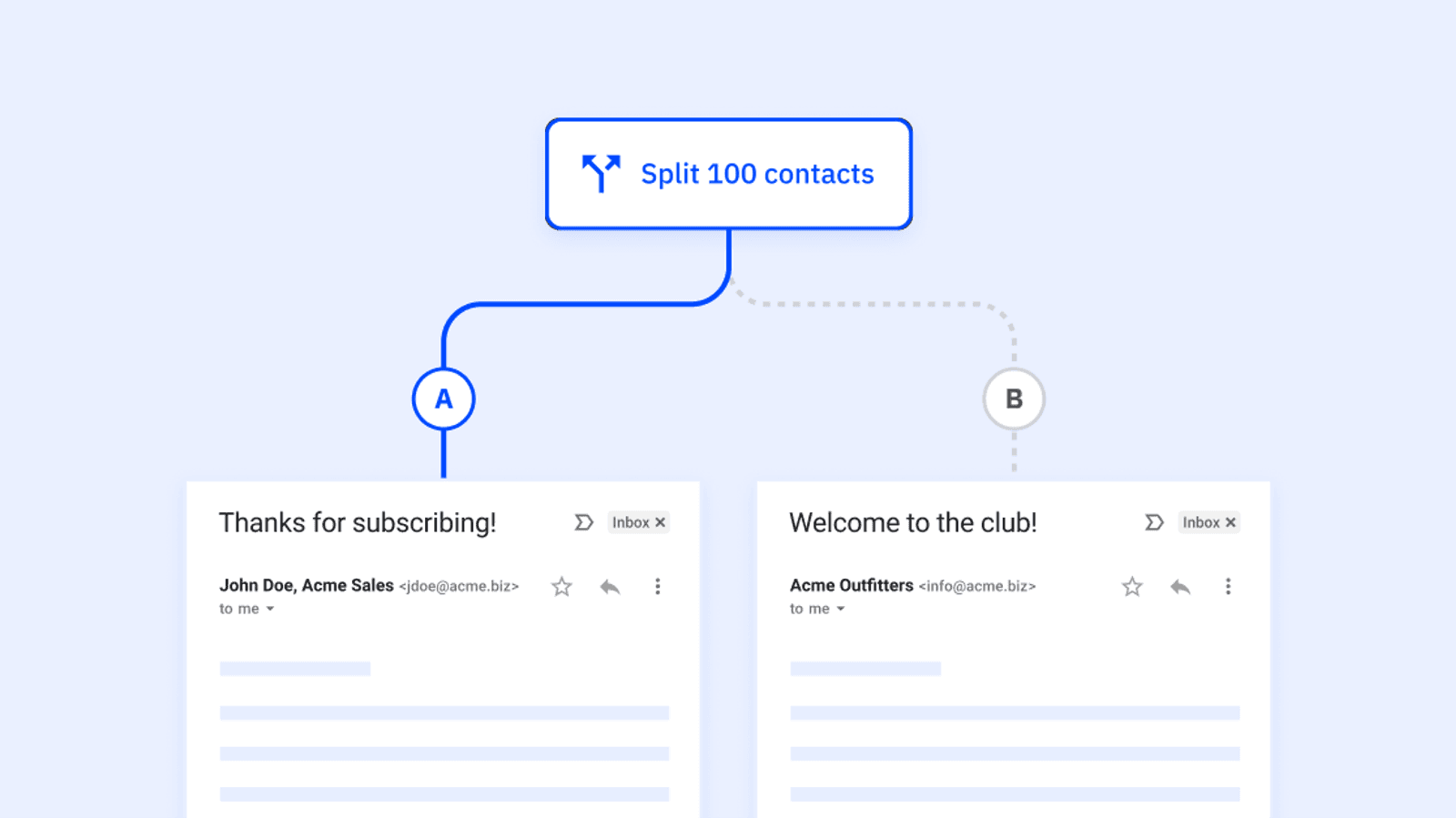Email deliverability is the ability of an email message to arrive in the recipient’s main email inbox. Email deliverability is often measured as a percentage of emails accepted by the internet service provider (or ISP for short).
When you think of email deliverability, you probably think about those emails you may have sent in the past that just somehow disappeared between your outgoing mail and the other person’s inbox. While this is one aspect of deliverability, there is more to it.
Deliverability is also related to inbox placement – whether an email appears in the primary inbox, the promotions tab or social tab, or the spam folder.
Why does email deliverability matter?
Email marketers use email deliverability to figure out whether or not their emails are reaching their customers. A failure to reach customers reduces the performance of a marketing email, which is one reason that deliverability is extremely important to every business. When you send out an email to your subscribers, you want them to open it and take action on it. This is why you’re sending it in the first place, isn’t it?
But what if your message never even has a chance to reach their inbox? It makes you look bad to your audience, not delivering on your promise, but it also looks bad to your ISP or mail service.
Even if your email list has a 98% delivery rate with 1,000 subscribers, that means 20 people never get to see your email. However, it doesn’t stop there! Even with a 98% delivery rate, you may only have an open rate of 20-40%. Where are those emails going? Your message may be in the dreaded spam folder.
How many emails reach the inbox is called deliverability rate.
There’s really no easy way to know where it went and why, so the deliverability rate can only be inferred. However, there is something you can do! Always focus on the ultimate goal of making sure that every single person on your email list gets the chance to open your emails. This means landing directly in the inbox.
Whether you’re looking to make sure your deliverability rate remains high or you’ve noticed a dip in emails reaching your subscriber’s inbox, here’s how to make that happen.
What is a good email deliverability rate?
A good email delivery rate is higher than 95%. You can use email marketing platforms such as ActiveCampaign to see the exact percentage of your emails that were delivered, opened, or bounced.
Of course, 100% is ideal but unrealistic, so just make sure you keep it as high as possible!
Many factors go into email deliverability, many that you can control, but also some that you can’t control, such as outages, a subscriber’s inbox being full, or other technical problems.
Let’s dig into what exactly affects email deliverability and then talk about how we can avoid or fix poor deliverability rates!
What is an email bounce?
Whenever an email doesn’t reach its intended account, whether that’s the inbox, a different tab, or the spam folder, it is considered bounced and the viewer never has a chance to see it. In short, a bounced email is one that failed to reach the subscriber.
It’s important to know that there are two types of bounces: soft bounce and hard bounce.
What is a soft bounce?
A soft bounce is a temporary issue in delivering your email due to a problem that can usually be resolved, such as a full inbox. While soft bounces were much more of a problem in the early days of email due to the limited amount of allowed incoming emails, most of these occur today if there is a sudden increase in the volume of emails being sent.
ISPs and mail servers watch for major spikes in send volume as it may be an indication that an account has been compromised or is being used for spam messages. For example, if you have consistently sent 1 email a week to 1000 subscribers and then try to send an email every day to those same subscribers, you’ve increased your send volume by 7x over a week and you will most likely see your bounce rate increase. Luckily, there are ways around this if you need to send an increased amount of emails in a short period.
What is a hard bounce?
A hard bounce is a permanent type of bounce that means there is something wrong with the email address you’re trying to reach. Often this is due to the email address no longer existing for whatever reason. A single hard bounce is a sign that you should remove that email address and won’t affect you too much, but if you continuously get these hard bounces, it will signal to your ISP that you’re not keeping up with proper list hygiene and will begin to hurt your reputation and email deliverability.
What affects email deliverability?
Factors such as sender reputation, authentication, and being blacklisted are all common reasons for low email deliverability. Being very clear about the content you send, and to who you send it to, is very important to maintain a high rate.
Let’s dive into these a bit more.
Email sender reputation matters
Everything we talk about in this article comes down to one thing: email sender reputation score. The lower your sender reputation score is, the less likely your email will reach an active subscribers inbox. This score is calculated based on an algorithm of many different factors to determine whether or not your email should be trusted.
Your email deliverability is then determined highly based on this sender score, as is where your email ends up. While a slightly low sender reputation may mean you get sent to some subscriber’s junk folder, an extremely low score will drop your deliverability down to nothing.
Other types of reputation are domain reputation, which is tied to the domain you are sending from, and IP reputation, which affects deliverability for specific IP addresses you use to send from.
Authentication is important – use SPF and DKIM
Email authentication allows ISPs to decide whether or not a sent email is legitimate. If there is some kind of “masking” going on where the domain the email appears to be sent from is not the true sending domain, deliverability will decrease. SPF (Sender Policy Framework) and DKIM (DomainKeys Identified Mail) tools are often used to authenticate an email. For example, you can use ActiveCampaign’s DKIM and SPF authentication checker to make sure your emails are always properly authenticated.
What are SPF and DKIM?
SPF explained
SPF (Sender Policy Framework) is a type of email authentication that is used to validate an email message and make sure it is actually coming from an authorized mail server. When the email is sent, it is checked against a list of authorized IP addresses that are allowed to send from that domain. SPF is often used to detect forgery and prevent spam.
SPF helps by making it nearly impossible to forge an email address, as any email with a forged address not coming from an authorized IP address will be denied by the mail server.
DKIM explained
The other common type of email authentication is DKIM (DomainKeys Identified Mail). It gives the person receiving an email an easy way to validate the authenticity. This is done through the use of encryption keys and digital signatures to verify and validate an email.
This type of authentication’s main function is detecting and preventing spoofing and phishing. Unlike SPF, DKIM authentication appears within the email itself, helping to prevent a receiver from replying to illegitimate emails.
Authentication drawbacks
However, it is important to know that some complications can arise when using authentication, specifically when the email is forwarded outside the designated domain.
Emails forwarded that use SPF may be rejected by the mail server. This problem is increasingly disappearing as more mail servers incorporate an internal schema called SRS (Sender Rewriting Scheme).
Similarly, DKIM authenticated emails may appear illegitimate to the receiving server when it is forwarded because the sender doesn’t match. However, most modern email service providers have found ways to resolve this issue, but it’s important to be aware of it.
Now that you understand the basics of email validation and authentication, which method should you use to help protect your deliverability rate?
Should you use SPF or DKIM?
The answer is you’ll most likely want to use both. They work together and provide the best way to authenticate your messages and avoid illegitimate emails being sent under your domain.
Not only that, but they also help to prevent spam and increase your sender reputation, and that’s something we can all be happy about!
One last thing to note about authentication is email spoofing. This is when someone tries to send an email from your email address without you knowing about it. There was a time when sending such an email was simple for anyone who knew what they were doing, but luckily thanks to authentication, most email servers are good at catching them and either not letting them through at all or pushing them straight into the spam folder.
ISP and mail service infrastructure
Despite being “in the cloud,” all email sends still rely on hardware and software to operate. This infrastructure impacts deliverability and can be complicated to set up on your own. This is why most businesses rely on tools, such as ActiveCampaign, with an extremely robust infrastructure that can handle a high volume of emails.
A strong infrastructure is important. Don't let your deliverability suffer!
Low open rate
Your subscriber lists’ open rate measures how many of your delivered emails are opened by their recipients. While an unopened email was delivered, the more often it goes unopened, the lower your sender reputation gets and the lower your deliverability rate becomes.
However, you’re not looking for an open rate of 95% as in with your delivery or deliverability rate. For many senders, a good open rate is above 20%, but be careful if it dips lower than that.
At 15% to 19%, you may not even notice a difference, but your deliverability rate may take a minor hit. If this happens, try to find out the reason for the lower open rate. Are your emails going to spam? Is the content not relevant? These are questions you should be asking yourself.
However, it’s when you drop below 15% that you start to see a lot of email deliverability issues and should work on your email list immediately. It may be caused by one of the problems mentioned above, or your list may have a lot of abandoned email addresses that need to be cleaned.
If for any reason your open rate drops below 10%, this tells ISPs that there is something really wrong with what you’re sending, either the emails on the list or the content, and you will have major deliverability problems. This most often occurs when a sender is purposely sending spam or using purchased lists.
Your email hits the spam folder – now what?
Much like unopened emails, when your emails get sent directly to spam they are technically delivered but will cause your sender reputation to drop. The question is, how do spam emails actually happen? There are two main ways: Spam complaints and spam traps.
Spam complaint
Most email programs these days, such as Gmail and Yahoo! Mail, allow their users to report an email as spam. While this isn’t a perfect system, as a person can report even legitimate emails, it helps them to determine where your email should end up.
The good news is it takes more than one person reporting your emails as spam to affect deliverability! So, as long as you’re sending high-quality content that your subscribers want and expect, you shouldn’t have a high enough spam complaint rate to worry about.
While we talk about this more below, you should never purchase/rent email lists, or send email content other than what subscribers signed up for as this is extremely likely to negatively affect your deliverability.
Spam traps
A spam trap is an email address that is usually owned by an ISP with the sole purpose of catching senders who add email addresses to their list without confirmation. If you have spam traps added to your list of subscribers, it has a very negative impact on your reputation, and therefore your deliverability.
If you’ve added many of these spam traps, usually through procuring a list without consent, your reputation will plummet and you may even lose the ability to reach any inbox at all.
In short, avoid these spam traps at all costs!
What happens if my email is blacklisted?
Blacklists are online databases that store email addresses that have been reported for too much spam or sending emails to too many spam traps. Email servers use these blacklists to determine whether or not an email should be accepted and sent through to its destination or deleted on the spot.
How to avoid being blacklisted
The simplest way to avoid being blacklisted is to always send high-quality, relevant content to subscribers who have opted in to receive it.
A few of the reasons you might find yourself on a blacklist are high bounce rate, low engagement rates, and erratic sending volume.
If you’re worried that you may have been blacklisted, or just want to make sure you’re not, you can try out MXToolbox’s free blacklist tool.
Steps to avoid and manage poor email deliverability
There are many ways to fix and improve your email deliverability rate. You can avoid email deliverability problems by regularly cleaning your email list, sending high-quality emails, and implementing a double opt-in process. The first thing you should do is figure out why you’re having deliverability issues.
Test your email deliverability and reputation
If you’re just starting out or haven’t had any complaints about your emails not reaching subscribers or ending up in the spam folder, chances are you don’t need to worry about testing your email deliverability and reputation.
However, if these issues have come up, or you’re seeing bad email delivery rates, there are a few ways to test and see what the real problem is.
- Use ActiveCampaign’s free authentication checker
- Check reputation with mail-tester.com and isnotspam.com, and even get advice on how to improve
- Use MXToolbox for a more robust set of tools to check authentication and reputation
Always send engaging content
The very first thing you should do if you start to notice your open rates, bounce rates, or deliverability rates suffering is to confirm that the content you are sending is high quality and what subscribers opted in for. If they don’t care about what you’re sending, they’re more likely to ignore the email or report it as spam.
If you’re sure that the content within the email isn’t the problem, the next step is to look into your subject lines. Be sure to use subject line best practices to create an engaging subject that makes your subscribers want to click and keep coming back each time you reach their inbox.
Not sure where to get started with your subject line? ActiveCampaign has a free subject line generator and best practices guide to help you out!
Building automations and re-engagement campaigns are another way to keep your subscribers engaged in your content and increase those engagement rates!
Make it easy to unsubscribe
There was a time when a less-than-ethical business could make it extremely hard to unsubscribe to an email list. Thankfully, times have changed and now it is required that every email contains a way to unsubscribe. While this might seem counterintuitive, remember that an unengaged subscriber who doesn’t open your emails, or worse, reports them as spam, actually hurts your sender reputation.
Recently, it’s become increasingly popular to include an unsubscribe link at the top of each email you send, especially for regular newsletters. However, at a minimum, make it easy by placing the unsubscribe link near the bottom of your email with the rest of the information on your company.
Be careful of sending limits and volume
A consistent schedule is key when it comes to both growing your list and keeping your deliverability high. However, there are times when you may need to send mass emails within a short period of time, such as a major sale or promotion. The problem is, if you increase your send too much at once, a mail server may see this as a sign of spam.
While there is no set number of emails to hit your sending limit, the best way to avoid hitting it is to slowly increase the number of emails you send leading up to the event.
For example, if you normally send 1 email every other week but have an upcoming promotion where you’ll be sending your whole list 4 emails in 4 days, you can set up the campaign to send preview or teaser emails every few days leading up to the promotion. By the time the big week comes, mail servers will have adjusted to a higher sending volume.
In short, the more of a regular schedule you have, the higher your deliverability will be.
Practice good email hygiene
Keeping your email list healthy is very much like keeping your teeth clean. If you keep up with regular maintenance, you’re less likely to develop a cavity, or in the case of your email list, low deliverability!
You should make sure to review and remove inactive subscribers often to avoid high unopen and bounce rates. If your emails are continuously bounced back or remain unopen, your sender reputation will suffer, followed by your deliverability.
Hard bounced emails should be taken off right away. But in the case of low open or engagement rates, it’s always good practice to try and re-engage them before removing them.
It’s also important to note that, while a very high unsubscribe rate may cause deliverability issues, keeping your list clean has a much higher impact.
Some email tools, like ActiveCampaign, allow you to set up automations to help seamlessly clean lists, giving you more time to focus on creating value for your engaged subscribers.
Always get consent to send (double opt-in is best!)
We’ve already stated multiple times that you should never buy or rent an email list, or use someone’s email address without their consent. This is one of the fastest ways to decrease your deliverability and end up blacklisted. However, email addresses can come from many legit places, but may still not be considered legit email subscribers. This is why it is always best practice to incorporate an opt-in system for adding new subscribers to your list.
When you select “double opt-in” for your email list, subscribers not only have to input their email address but also confirm the subscription in their inbox. Your list will be safeguarded by making sure only the most engaged subscribers sign up, protecting your engagement metrics and sender reputation.
What is single opt-in?
Single opt-in requires a visitor to take a single action to become a subscriber, such as submitting a form or writing their email down on a list.
While this is one way to gain consent, there are cases when a person might not realize what they are providing their email address for, such as if they think they’re just receiving a receipt and not a newsletter. This is why a double opt-in is usually considered best practice.
What is double opt-in?
Double opt-in requires a visitor to take two actions to become a subscriber. This is most commonly done by enabling “double opt-in” through your mailing list provider. The subscriber first submits a form and then confirms their subscription through a link in an email sent to them, known as a confirmation email.
However, there are other ways this might happen, such as if you receive an email address from a trade show or convention. In this case, the second form of consent may be a verbal one or, more likely, a one-off email sent to them to confirm being added to your list. This can be done through automation if you have a system in place to do so.
Essentially, any method where you receive an email address and then also receive confirmed consent to add them is considered a double opt-in.
Never send to purchased or rented email lists
The fastest way to be blacklisted and lower your open rate is to purchase or rent an email list. While it might seem like a great way to jumpstart your list, adding email addresses you’ve purchased, rented, or otherwise procured without the owner’s consent is not only wrong but may be illegal in certain circumstances.
Remember, if the people you’re sending to didn’t ask to receive your email, they’re extremely less likely to open it and more likely to report it as spam.
Not to mention these types of lists are notorious for including spam traps!
How to get the best deliverability
Deliverability has a continuous cycle where the more your subscribers engage with your emails, the better the inbox placement becomes. Be sure to monitor your email engagement metrics, that is the clicks, opens, and bounces, to make sure you’re sending the right content to the right people at the right time.
This is why choosing an email marketing platform that has a strong infrastructure in place with a high inbox reputation that can also automatically track every email you send, as well as automate new subscribers, re-engagement, and more, is so important.
Choose a reliable platform
ActiveCampaign is #1 in email deliverability among competitors in Emailtooltester’s recent deliverability test, with an average deliverability rate of 93.4%

Average deliverability among the most popular email marketing tools.
If your emails aren’t landing in recipients’ inboxes, your marketing efforts are going to waste. Choose a platform that ensures your emails successfully land in recipients’ inboxes. Experience better email deliverability yourself with ActiveCampaign.
Start a free trial to start building campaigns that have the best deliverability rate in the industry.







